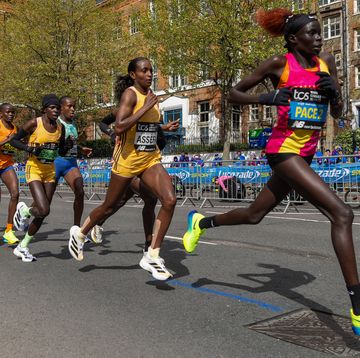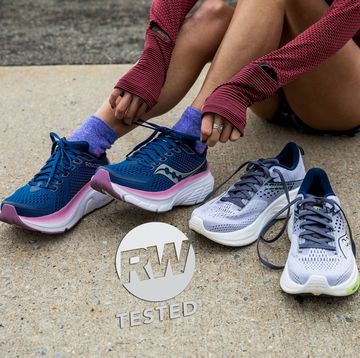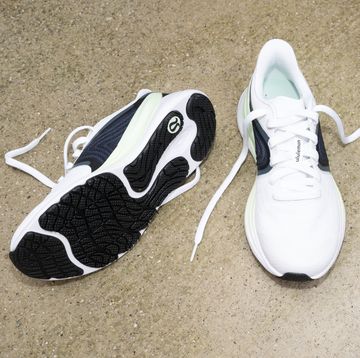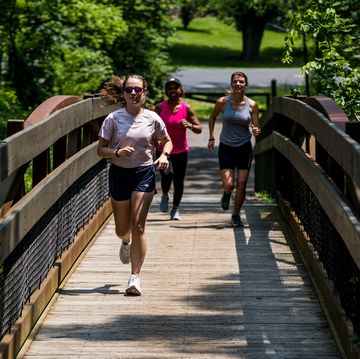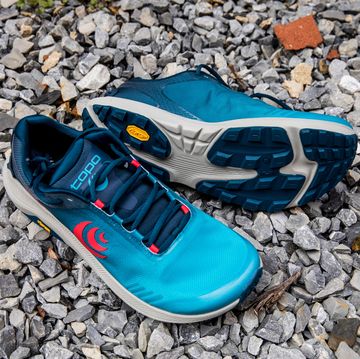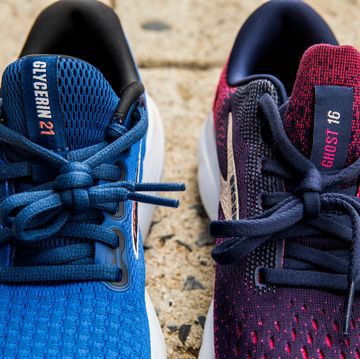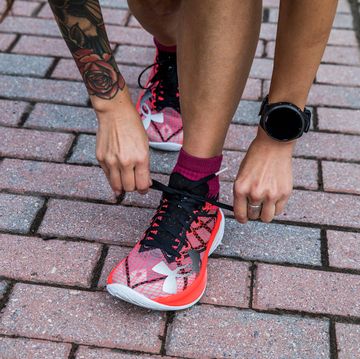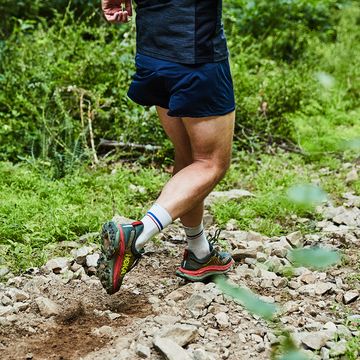Under Armour’s new Fat Tire trail shoe turned heads during last winter’s trade shows, garnering Outside magazine’s “Gear of the Show” award at Outdoor Retailer.
Inspired by and built to mimic a fat bicycle tire, it looks like no other shoe you’ve encountered before. This week, we got to run in a production model for the first time, and we were unexpectedly pleased with the performance.
The first surprise comes as you put on the shoe. Given the concave shape of the outsole, I expected to sink into the middle and have the shoe wrap up around the sides like a moccasin. Instead, you encounter a firm, bouncy midsole underfoot.
It feels like there is an inflated tube in this tire, and you’re strapped to the top of it with a relatively shallow stretch upper that wraps your foot snuggly. It’s unusual, but not uncomfortable.
That firm underfoot feel comes from Under Armour’s proprietary “Charged” midsole material that provides a responsive ride. Below that is a softer, squishy midsole foam designed to swallow the rocks and roots of the trail. A sticky rubber with varied aggressive lugs made by Michelin covers the bottom.
Standing in the shoes, you can roll your foot left or right, forward or back, but you aren’t being tipped off like a balance ball. On the trail, the beveled heel adapts to any landing angle and quickly rolls back to center—almost a Weebles-Wobble effect.
The forefoot rocker rolls you easily forward off your toes. Landings feel both cushioned and responsive, as the outer layer of the midsole protects from trail irregularities and the inner foam gives a super-ball feel next to the foot.
On a four-mile run over the roughest terrain I have near my office, I found the sole handled soft sand, lumpy dirt, sloped surfaces, roots, and thick grass tufts with aplomb, always rolling me upright and forward. The bounciness made me take long, loping strides at first, but I adapted to rolling quick in them, only stretching out when bounding down hills.
After three miles I noticed that I had been gripping with my toes, as if holding on to the tire beneath my feet. Relaxing, I found the stretch upper held me in place just fine. The shoe doesn’t feel terribly fast, but it isn’t clunky either.
I was a little sore the morning after my run in them, in unusual places like the adductors and gluteus medius—no doubt because of the balance required.
Would I want to run in them again? Yes. I’d particularly enjoy taking them on a rocky technical trail, across a field of boulders, or over jagged shore rocks where the grip and adaptability of the sole would allow me to skip nimbly from surface to surface without fear.
The low-top version shown here will retail for $150. A waterproof high-top version will be available for $200. Both are due out late in the summer of 2015.



